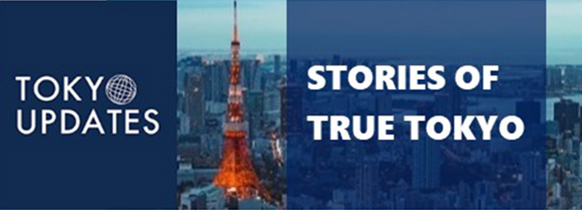- Tokyo Shibuya Koen-dori Gallery YouTube
- Tokyo Shibuya Koen-dori Gallery X
- Tokyo Shibuya Koen-dori Gallery instagram
- 화이트
- 블루
- 검정
- Fontsize small
- Fontsize big
Art Brut Then & Now Vol.3
Floating in a World of Memories
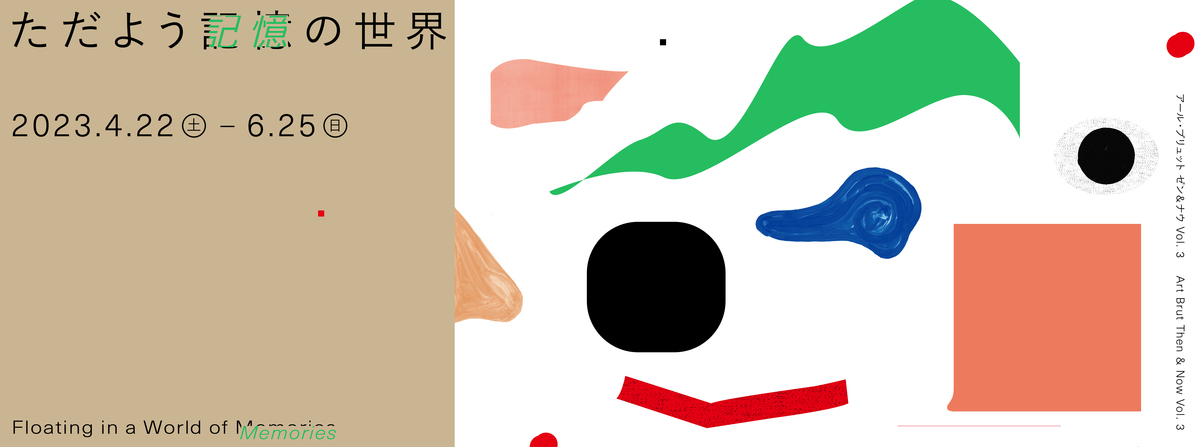
Art Brut Then & Now is a series that presents, from varying angles, artists who have long been active in the Art Brut scene in Japan and overseas for many years, alongside new artists who have been exhibited widely in recent years.
The third exhibition in the series, “Floating ion a World of Memories,” takes up five artists from Japan, presenting their works-born from “memory” of physical sensations such as sight and taste-as a “world of artists’ memories of particular moments.”
The artists express their “world of memories” each from their own unique viewpoint and emotion in artworks differing greatly in form. By vividly depicting memories of food eaten, scenery and nature observed, and the drawing songs enjoyed in their childhood, the artists take us inside their experience.
Even if multiple people spend the same time in the same place, memory of that time will be unique for each person. That difference in each person’s memory is also an important element in making that person who they are.
Giving a little thought to memories of what transpires in our busy lives and easily-forgotten memory of sensations, we might reencounter memories that, while small, are deeply precious.
Won’t you try “floating” in the multi-form “world of memories” of the five artists, feeling the time of their memories, now gone?
"Floating in a World of Memories" - Exhibition Documentation
| Title | Art Brut Then & Now Vol.3 Floating in a World of Memories |
|---|---|
| Period | Saturday, 22 April – Sunday, 25 June 2023 |
| Opening Hours | 11:00am - 7:00pm |
| Closed | Mondays |
| Venue | Tokyo Shibuya Koen-dori Gallery |
| Admission | Free |
| Artists | GOTO Tomoyasu / KOBAYASHI Itsuo / HIGASHIMOTO Noriko / HERAI Takanori / MATSUBARA Hikaru |
| Organized by | Tokyo Shibuya Koen-dori Gallery, Museum of Contemporary Art Tokyo, Tokyo Metropolitan Foundation for History and Culture |
Highlights of this exhibition
1. The works born from the various memories of physical sensations
The exhibition takes up the work of five artists, which was born from their memories of physical sensations such as eaten food or visited places.
Even though it is a memory, it comes in different forms. It could be expressed in a specific form easy to identify or in an abstract form.
You can appreciate the expression that comes from different motifs, from familiar ones such as lunchboxes and vehicles to pieces you might have seen somewhere.
2. The works created from various materials
There are works made of the bubbe cushioning material in the exhibition.
You can also realize that the works are created from familiar materials that you can see and touch in everyday life, such as the paper of a calendar, a CD, plywood board and so on.
The exhibition shows works that have been transformed from familiar materials into various artists' expressions.
3. Walk and float through the works of art
We will display the works in different ways. You can see the curved wall, linear wall and polygonal wall in the exhibition room. Please enjoy the exhibition in your own way, walking along the curve of the wall, looking into the work exhibited as if floating in the air, and looking up at the works above you.
Artists
*The images shown may differ from the actual works exhibited.

GOTO Tomoyasu, Untitled, 2009-2010, Collection of the artist. Courtesy of Minuma Social Services Corporation Kawaguchitaiyonoie KOBO SYU.
Born in Saitama Prefecture.
GOTO Tomoyasu created works from 1984 to 2019 as a member of “Kawaguchi Taiyonoie” in Saitama Prefecture. The lines he draws on plywood, vinyl records, and CDs, using brightly colored crayons and ink, are a form of creative expression sourced in the drawing songs he heard as a child.
Strongly interested in sound, Goto regularly recorded classical music, voices of family members and facility staff, and other sounds on cassette tapes and listened to them often.
When created a drawing song work, he freely changes the singing as he likes while drawings. Originally working on cardboard, he eventually shifted to drawing on plywood.
In the beginning, Goto drew alone while singing drawing songs. Gradually, as facility staff began to sing along and friends gathered to help stack the finished plywood pictures, his work environment changed. The work shown is apparently connected with his memories of childhood and people he met at the facility. Goto’s major exhibitions include “KOBO SYU Exhibition Fundamental II” (MAKII MASARU FINE ARTS [Tokyo], 2015).
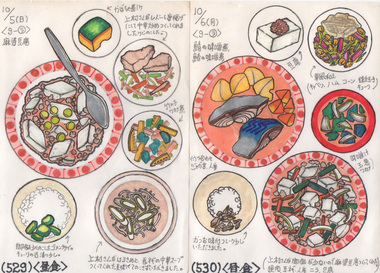
KOBAYASHI Itsuo, Untitled, 2003, Collection of the artist. Courtesy of Kushino Terrace. *Reference image
Born in Tokyo Prefecture.
KOBAYASHI Itsuo worked as a cook in places such as soba restaurants and hospital meal supply centers. Around the age of 18 or 19, he began to recall and write down memories of meals he had eaten. Around 26, his memory-keeping shifted to its current style of production. Relying on the note-taking he has maintained since around 18, Kobayashi revives his memories of past meals and draws them. Because he rearranges the many meals to show each ingredient clearly, we feel as if viewing a diagram of a bento meal.
Using pens and colored pencils, Kobayashi meticulously captures the grill marks on grilled mackerel, the texture of fried croquette batter, and the colors of sashimi and vegetables. Accompanying the paintings are his comments on their tastes and ingredients. By writing such comments, he transforms his memories into fresh new memories of his eating experience. In recent years, he has also produced works that stand up three-dimensionally like a pop-up book. Kobayashi’s major exhibitions include “Art Brut du Japon, un autre regard” (Collection de l'art brut [Lausanne, Switzerland]), 2018-2019).
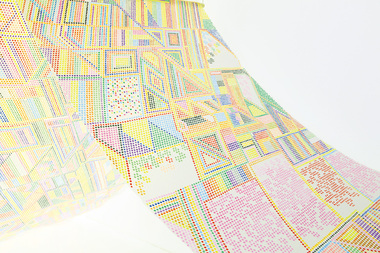
HIGASHIMOTO Noriko, Untitled, ca. 2011-2018, Nishi-Awaji House of Hope. Photo: MIYAJIMA Kei, Courtesy of POCORART National Open Call Exhibition vol.6.
Born in Osaka Prefecture.
HIGASHIMOTO Noriko belongs to the “Nishi-Awaji House of Hope”. Besides textiles, she produces illustrations and various other works.
Choosing her colors carefully, Higashimoto paints the individual air bubbles of bubble cushioning material using oil-based markers and water-based ink pens. As she works, her straight lines and color fields find connection and geometric patterns are born. Using an entire roll of the material, she paints it from end to end, carefully attentive to detail.
A close look reveals that the painted bubbles, instead of uniformly round circles, each display individual character, some having tiny horn-like protrusions and so on, and enable us to sense her rhythm of working.
When her roll of bubble cushioning material is laid out, patterns suggestive of cherry blossoms and Christmas trees appear interspersed among the geometric patterns. For Higashimoto, who often travels with her family, the patterns of her colored bubbles perhaps hold precious memoires of the time spent and things seen.
Higashimoto’s major exhibitions include “Kitakyushu Art Festival Imagining Our Future” (Kitakyushu Municipal Museum of Art (Main Building) [Fukuoka], 2021).
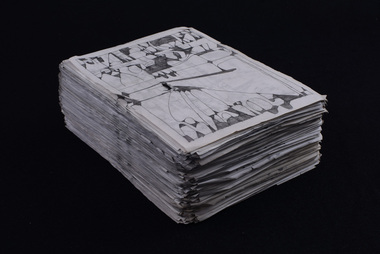
HERAI Takanori, Diary, 2000-2006, Collection of the artist. Photo: ONISHI Nobuo, Courtesy of Borderless Art Museum NO-MA.
Born in Iwate Prefecture.
Creating Diary was a daily custom for HERAI Takanori amid his days at “Yasawa no Sono” in Hanamaki City, Iwate Prefecture. Staff began to observe Herai and his habit of drawing, and through their patient, careful dialogue with him, what he expresses in his drawings gradually became clear.
In form, Herai’s drawings appear like patterns drawn on both sides of a B5-size paper sheet. The works, which Herai himself calls “a diary” or else “studying” or “picture drawing,” are composed according to his own rules, such as calculating the day’s temperature by adding one to the number of the day of the month. Instead of completing a sheet in one sitting, he works on several, switching among them according to his mood.
Drawn on the sheet’s back is always the same sentence, which begins “I did radio exercises today.” One attractive feature is that, although always the same sentence, the shapes he blackens each time are slightly different.
It is believed that Herai may have started Diary when the custom of keeping a communication notebook was suspended at his elementary school. Memories of past communication notebooks seem to intersect with memories of daily habits in the works. Herai’s major exhibitions include “JAPON” (Collection de l'Art Brut [Lausanne, Switzerland], 2008-2009).
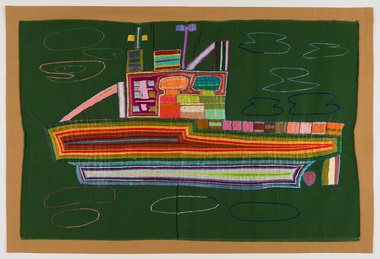
MATSUBARA Hikaru, Working Ship, Date unknown, Collection of the artist. Courtesy of art space co-jin "The Kyoto Archive of Art by People with Disabilities".
Born in Kyoto Prefecture.
Began embroidering from the age of 16.
Making precise stitches, MATSUBARA Hikaru sews embroideries that express motifs in bold forms. Images of mountains and scenic places visited on family trips and seasonal flowers and plants in his yard take form in embroideries displaying distinctive shapes and brilliant colors reflecting his unique sense of color.
Matsubara enjoys cars and trains, and boats seen at travel destinations also appear frequently as motifs. It was, in fact, thoughts of “wanting to ride in a boat (airplane)” that occasioned him to take up embroidery. Surrounded by travel guides, photo albums, and embroidery thread in a room with a view of trees in the garden, he stitches an embroidery world connecting the various places and experiences of his life.
His embroidery works convey to us the fun of imagining the beauty of landscapes seen on travels and plants around him in everyday life.
Matsubara’s main exhibitions include “Symbiosis Art Festival ‘Width and Depth’”(Kyoto Prefectural Center for Arts and Culture, and other venues, 2016), and “Symbiosis Art Festival ‘Going on a Trip, Getting Ready’” (Kyoto City Museum of Art Annex, and other venue, 2021-2022).
Related Event
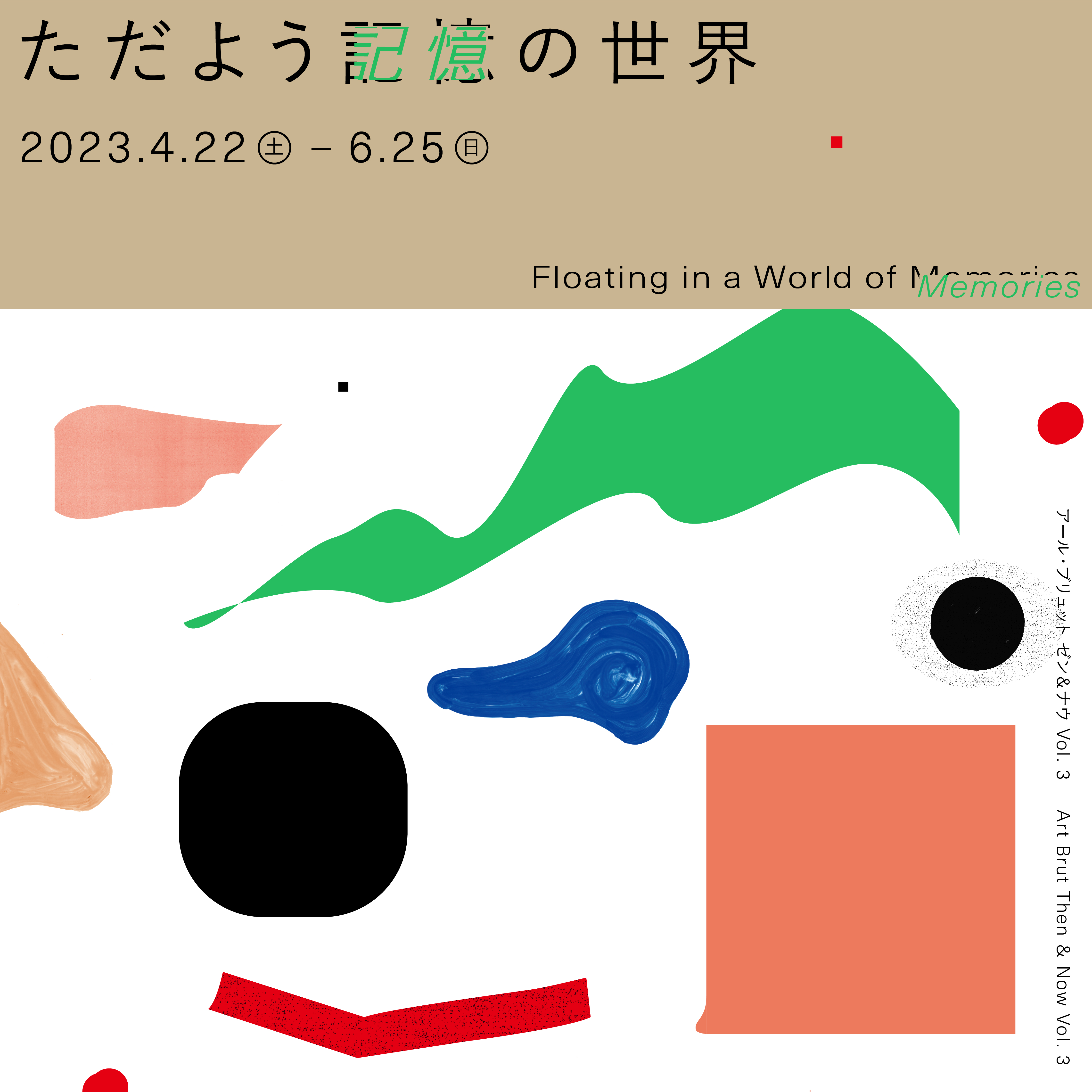
Art Brut Then& Now Vol.3 "Floating in the World of Memories"
Curator's Gallery Talk ※Japanese Sign Language provided ※Conducted in Japanese
- Period
- Saturday, 13 May 2023
- Venue
- Tokyo Shibuya Koen-dori Gallery, Gallery1and Gallery2
- Admission
- Free
The curator of this exhibition will give commentaries on the art works.
It will be conducted in Japanese.

Art Brut Then& Now Vol.3 "Floating in the World of Memories"
Gallery Talk with Guest ※Two times in a total ※Conducted in Japanese ※Japanese Sign Language will be provided
- Period
- Sunday, 28 May 2023 / Saturday, 10 June
- Venue
- Tokyo Shibuya Koen-dori Gallery, Gallery1and Gallery2
- Admission
- Free
We will invite some of the people associated with the exhibiting artists as guests to talk about the exhibition.
It will be conducted in Japanese. Japanese sign language will be provided. ※Two times in a total
■Sunday, 28 May 1:30pm-2:30pm <Capacity: 10 persons>
Guests:
MORITA Hiroko (a member of Minuma Social Services Corporation Kawaguchitaiyonoie KOBO SYU)
KANETAKE Keiko(Normalization Society social welfare corporation, Nishi Awaji House of Hope, Art club)
■Saturday, 10 June 1:30pm-2:30pm <Capacity: 10 persons>
Guests:
TABATA Kazue(Social Welfare Organization GLOW)
※Please note that there is a possibility of sudden changes to guests on the day of the event.
Related Interactive Program
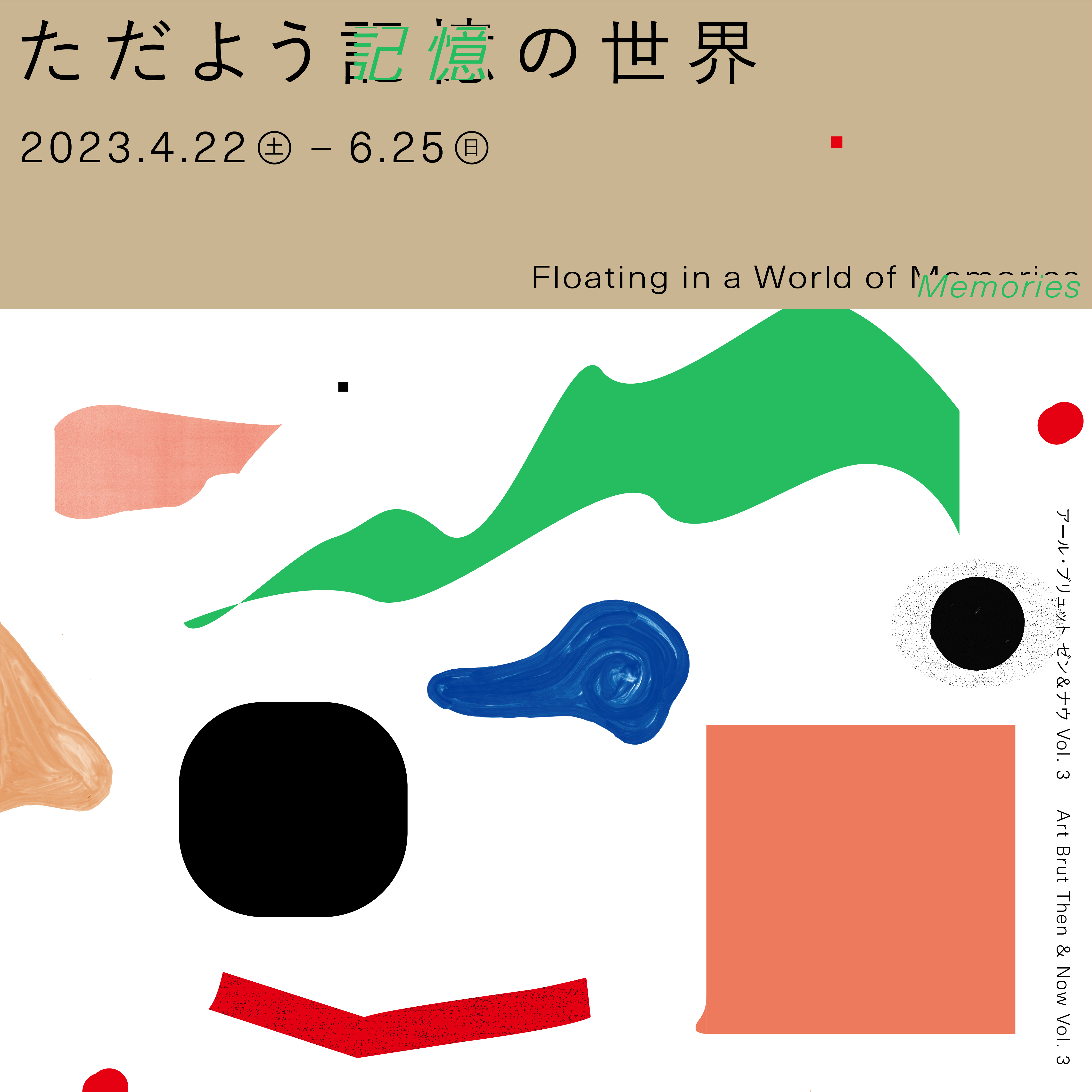
"Floating in a World of Memories"
Reference space (from 22 April, 2023 to 25 June, 2023.)
- Period
- from 22 April, 2023 to 25 June, 2023.
- Venue
- Tokyo Shibuya Koen-dori Gallery, Interactive Space
- Admission
- Free
The interactive space become a reference space of Art Brut during “Art Brut Then& Now Vol.3 ‘Floating in a World of Memories’”. We will exhibit the panels which introduce the facilities the exhibiting artists of “Floating in a World of Memories” participate in. Furthermore visitors can read some books on Art Brut. The space is open to public. Please feel free to use it.




